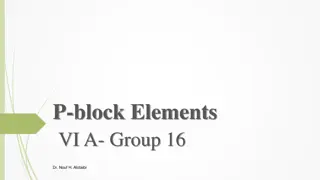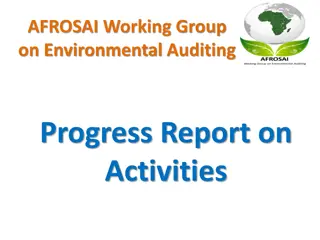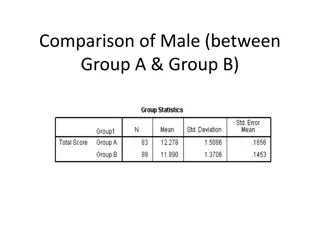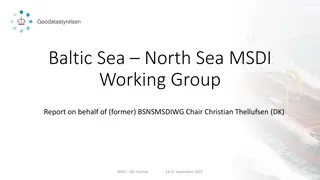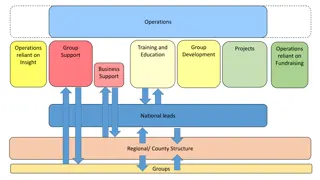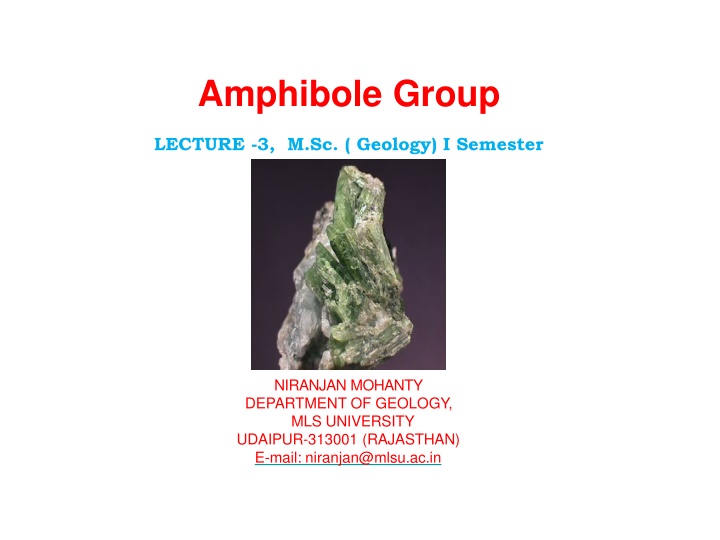
Structure and Classification of Amphibole Minerals in Geology Lecture
Explore the structure, composition, and classification of amphibole minerals in geology, covering topics such as double-chain backbones, A-sites, common types, crystal systems, and cleavage angles. Learn about the orthorhombic, monoclinic, and triclinic amphibole series as well as the unique features and variations within this mineral group.
Download Presentation

Please find below an Image/Link to download the presentation.
The content on the website is provided AS IS for your information and personal use only. It may not be sold, licensed, or shared on other websites without obtaining consent from the author. If you encounter any issues during the download, it is possible that the publisher has removed the file from their server.
You are allowed to download the files provided on this website for personal or commercial use, subject to the condition that they are used lawfully. All files are the property of their respective owners.
The content on the website is provided AS IS for your information and personal use only. It may not be sold, licensed, or shared on other websites without obtaining consent from the author.
E N D
Presentation Transcript
Amphibole Group LECTURE -3, M.Sc. ( Geology) I Semester NIRANJAN MOHANTY DEPARTMENT OF GEOLOGY, MLS UNIVERSITY UDAIPUR-313001 (RAJASTHAN) E-mail: niranjan@mlsu.ac.in
Structure of amphibole Amphibole essentially pyroxene alternate tetrahedral in a row share an oxygen with another neighbouring chain. Striking feature of amphibole group is structure of in which consists chain a the double linked tetrahedral laterally i.,e along b. The chains have double the width of those in pyroxenes. The linked chain extends along c direction. Because pattern tetrahedral are adjoining chain i.e., Si4O11 or Si8O22 chain of i.e., characteristic alternate linked Si:O is 4:11 with
Amphiboles (A0-1X2Y5Z8O22 (OH,F)) A-site Na+, K+loose coordination 10-12 Oxygens X X (M4) Na+, Ca++, Mn++, Fe+2, Mg++, Li+8-fold Y (M1-3) Mn++, Fe+2, Mg++, Fe+3, Cr+3 , Ti+46-fold octohedral Z (Tetrahedral T-site) - Al+3, Si+4 double-chain backbone
Common Types of Amphiboles 0953849001031361708
TOT stacks separated by big Na+ and K+ A cations TOT A assemblies staggered
Classification of amphiboles (crystal system) I. Orthorhombic amphiboles Anthophyllite Mg7Si8 O22(OH)2 Monoclinic amphiboles Cummingtonite- grunerite series Cummingtonite (Mg, Fe) 7Si8 O22(OH)2 Grunerite (Fe, Mg) 7Si8 O22(OH)2 Tremolite actinolite series Tremolite Ca2Mg5Si8O22(OH)2 Actinolite Ca2(Mg, Fe)5Si8O22(OH)2 Hornblende series Hornblende (Ca, Na, Mg, Fe, Al) 7-8 (Al, Si)8 O22 (OH) 2 with varieties arising due to substitutions amongcations d) Alkali amphibole series Glaucophane Na2(Mg,Fe)3(Al,Fe+3) 2Si8 O22 (OH)2 Riebeckite Na2 Fe+2 3 Fe+32Si8 O22 (OH)2 Arfvedsonite Na3 Mg4 Al Si8 O22 (OH)2 III. Triclinic amphiboles a) Cossyrite or aenigmatite - an aluminium silicate of Na, Fe and Ti(now it is believed be a pyroxene single chained). II. a) b) c)
Paragenesis Riebeckite Igneous rocks soda-rich granites, rhyolites and pegmatites Metamorphic rocks as well. Arfedsonite Alkaline igneous rocks (nepheline syenites). Varieties Anthophyllite forms a asbestiform variety (Amosite). But its fibres are generally brittle and of low tensile strength. Hence it is unsuitable for spinning. It is mainly used in cement industry and as an insulating material. Gedrite- a aluminium anthophyllite. Tremolite also form a variety of asbestos. But it is less valuable industrially than chrysotile. Riebeckite occurs in a asbestiform variety called crocidolite or blue asbestos.











